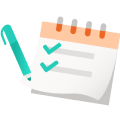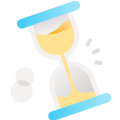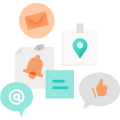
8 ways Microsoft 365 solutions can empower employees to prioritise well-being
Following the pandemic, many UK organisations moved to a hybrid workplace model, with employees working remotely for part of the week. Surveys also reported a change in attitudes to work, with more employees seeking to rethink their work-life balance.
Data from our 2022 Work Trend Index Annual Report confirm the shift. We found that 53 percent of employees were more likely to prioritise health and well-being over work than before the pandemic. In addition, nearly half of respondents (47 percent) were more likely to put family and personal life over work than they were pre-pandemic.

Figure 1. Employee work attitudes post- vs. pre-pandemic. (Source: Microsoft, Work Trend Annual Report, 2022.)
At Microsoft, we believe technology can be a powerful ally in the journey towards better employee well-being. As such we wanted to take the opportunity to raise awareness of mental health issues and promote good practice both in and beyond the workplace.
To help you reclaim the right balance we’ve pulled together eight practical Microsoft 365-based tips to help employees and managers reshape today’s fast-paced work experience in the name of better mental health.

1. Nurture community and connection at work
Research shows that, in a hybrid world, it’s even more important to forge meaningful networks and relationships at work. Employees who have thriving relationships with team members report better well-being than those without (76% vs. 57%).
To help you reconnect and find belonging at work, Microsoft Viva Engage – an add-on in Outlook – enables you to share work and experience with colleagues. Join digital communities and conversations, find answers to questions, and inspire others with your stories. You can also connect via the announcements, to-dos and check-ins on your personalised Viva Connections dashboard.

2. Book focus time each week
If meetings are dominating your days or weeks, it can be stressful to keep on top of incoming emails, messages and resulting actions. It’s also hard to focus on challenging work when you only have small chunks of time between meetings.
Blocking out time every day or week to focus without interruption can help. The Wellbeing tab in Microsoft Viva insights contains a section called “Take action to improve your wellbeing”, in which you can create a daily focus plan.
To help you stay in control and also step away from work, other available well-being features include:
- Make time for messages
- Schedule emails for later
- Take a break or two
- Make time for lunch
To help you concentrate, your status in Microsoft Teams will auto-switch to Focus during booked focus time. You’ll only get notifications for messages that are urgent or from contacts with priority access.

3. Schedule times to manage email
Most office workers check their email regularly throughout the day. But it’s a battle to get work done if you spend most of your time responding to tactical requests from other people.
Try limiting when you check emails to two or three slots per day. Disabling email notifications will help reduce the temptation. This can easily be done in Microsoft Outlook – go to the File tab, select Options, select Mail, and in the Message arrival section, uncheck Play a sound, Show an envelope icon in the taskbar and Display a Desktop Alert:

4. Stay on top of your to-do lists
A helpful way to get something off your mind is to write it down. But how many to-do lists do you have? Perhaps a grocery list on the back of an envelope, a list of things to do in notes or a phone app, maybe some tasks in Outlook?
You might also have flagged emails to get back to, not to mention a task someone has assigned you in Planner.
You can organise this avalanche with an app like Microsoft To Do. It’s free and syncs across Windows 10 and 11, iPhone, Android and the web. It’s also integrated with Outlook.com, making it easier to manage all your tasks in one place.
Planner tasks assigned to you also appear in To Do under the Assigned to you list:

5. Set limits to your working day
Our research has identified a third productivity peak outside the typical pre-pandemic 9am-5pm spikes, with the most common after-hours activity being email (source: Microsoft New Future of Work Report 2022). While working remotely can make this habit more tempting, it’s crucial to set boundaries to your working day and give yourself a break.
To do so, select the Wellbeing tab in Viva Insights and use the “Disconnect with quiet time” card, which allows you to set your quiet time.
As a manager or leader, you can also use Viva insights to help ensure your team properly disconnects after work. View their total weekly after-hours collaboration time and, if needed, recommend changes.
Taking a well-earned holiday? Set your Out of Office and stop syncing Outlook on your phone to remove temptation. You might even want to remove work apps from your phone to avoid peeking at emails.

6. Be aware of your after-hours impact on others
This follows from the previous point. While minimising after-work hours is an ideal, we recognise that work schedules must flex for many reasons. Some people are night-owls; others may choose to work late to prepare for a busy day ahead.
Whatever the case, we need to be aware of the impact our habits may have on others. As reported in a 2022 UK Parliament Post briefing, after-hours working in a hybrid setting can cause remote colleagues to feel under pressure to always be available online.
To help avoid this, Viva Insights can show you the after-hours impact you impose on co-workers. Its coaching tools can also help you build smarter habits.
If you must work late, minimise any unwanted impact by saving emails to your Drafts folder until business hours, or schedule the delivery of your email using Options > Delay Delivery:

7. Work the way that works for you
A key strength of technology is its potential to support inclusiveness, empowering everyone to access tools the way that suits them best. Microsoft 365 apps come with built-in accessibility features for a more comfortable experience at work. For example, Microsoft Teams supports inclusive collaboration in hybrid meetings with captions and live transcripts, which can help people who are deaf or hard of hearing.
To enable a personal and human touch in virtual meetings, Teams also incorporates live React controls (at the top of the meeting view).

8. Pay attention to the present moment
Mindfulness is about being aware of your body, mind and feelings in the moment. Practising it can improve your sense of well-being and how you approach challenges.
In Viva Insights, you’ll find guided meditations and focus music, including content from Headspace. Take a break to support your mental health.
Seizing the opportunity
We hope our commitment to well-being has a positive ripple effect in today’s workplace. However, while technology can help promote a healthier work-life integration, only we ourselves – workers and leaders together – can deliver it.
Find out more
About the author
 David manages Microsoft UK’s Employee Experience business, overseeing a suite of solutions designed to enhance employee engagement and boost business performance.
David manages Microsoft UK’s Employee Experience business, overseeing a suite of solutions designed to enhance employee engagement and boost business performance.




